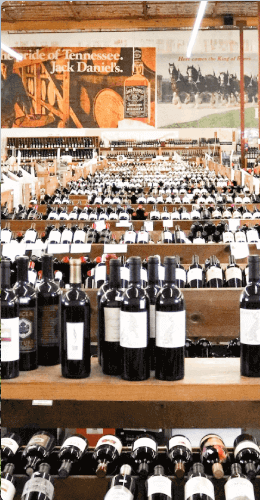Wine 101: The Difference between Appellations and Varietals

In the intricate world of wine, two terms, “appellations” and “varietals,” play pivotal roles in defining a wine's origin and character. What does it mean to be a “varietal wine”? Does an appellation have just one varietal? Delving deeper into these concepts uncovers not only aspects of geographic and grape character, but also the quality distinctions within appellations, often visualized in a pyramid structure. The classic example is Bourgogne (aka Burgundy), available in all its quality levels from the best wine store.
Appellations and the Quality Pyramid
An appellation signifies a specific geographic area where grapes are grown, with each area possessing unique soil, climate, and topography, collectively referred to as terroir. This terroir influences the grapes' characteristics, thus defining the flavors and aromas of the resulting wine. Appellations are categorized into several levels of specificity, from broad country designations to more precise vineyard or estate distinctions.
Quality hierarchies within appellations are common, often depicted in a pyramid format, with the highest quality wines at the pinnacle. A classic illustration of this hierarchy is found in Bourgogne, France. At the base of the pyramid are regional appellations, such as Bourgogne Blanc or that red wine bottle, Bourgogne Rouge, which encompass wines made from grapes sourced across the entire Burgundy region. These wines are typically entry-level offerings, showcasing the regional style and character.
Moving up the pyramid, we encounter village appellations, which denote wines sourced from a specific village within the Burgundy region, such as Gevrey-Chambertin or Puligny-Montrachet. These wines exhibit more distinct characteristics attributed to the village's terroir, offering a higher level of quality and complexity.
Above village appellations are premier cru (1er cru) vineyards, recognized for producing wines of superior quality within their respective villages. Premier cru wines are highly sought after for their refined flavors and expressive terroir characteristics, making them a favorite among wine enthusiasts and collectors.
At the pyramid's peak are grand cru vineyards, the most prestigious designation in Burgundy. These vineyards are revered for consistently producing wines of exceptional quality and ageability. Grand cru wines are renowned for their complexity, elegance, and ability to express the unique terroir of their specific vineyard site.
Recently appellations such as Rioja and Cava have also instituted quality pyramids. When you order from the online wine store, try some appellation wines of different quality levels. You’ll be amazed at the differences!
Varietals
In contrast to appellations, varietals denote the grape variety used to produce the wine. For instance, a wine labeled as "Chardonnay" is made primarily from Chardonnay grapes (usually at least 75-85%). Understanding varietals can provide insights into a wine's flavor profile and characteristics, as different grape varieties exhibit distinct aromas, flavors, and textures.
Varietal wines are wines made primarily from a single grape variety, and the label of the wine typically bears the name of that grape variety. For example, a wine labeled as "Merlot" is made predominantly from Merlot grapes. The use of varietal names on wine labels is common in many New World wine-producing countries, such as the United States, Australia, and South Africa, where it is often a legal requirement to label wines with the grape variety used. In many ways, this makes things easier when you order wine delivery.
The concept of varietal wines allows consumers to easily identify and understand the primary grape variety used in the wine, which can give them an idea of the wine's flavor profile and characteristics. Different grape varieties have distinct aromas, flavors, and structural components, which are influenced by factors such as the grape's genetic makeup, where it is grown, and how it is processed and aged.
For example, Cabernet Sauvignon is known for its bold tannins, dark fruit flavors, and herbaceous notes, while Chardonnay is known for its buttery texture, tropical fruit flavors, and oak-derived aromas. By understanding these varietal characteristics, consumers can make more informed decisions when selecting wines based on their personal preferences.
While varietal wines are typically made from a single grape variety, it is not uncommon for wines to be blended from multiple grape varieties. In some cases, blending can enhance the complexity and balance of the wine, combining the unique characteristics of different grape varieties to create a more harmonious and nuanced final product.
In regions where the concept of terroir is highly valued, such as France, labeling laws often prioritize the appellation of origin over the grape variety. Wines from these regions are labeled based on the geographic origin of the grapes, rather than the grape variety itself. For example, wines from the Bordeaux region of France are often blends of several grape varieties, such as Cabernet Sauvignon, Merlot, and Cabernet Franc, but are labeled with the Bordeaux appellation rather than the specific grape varieties used.
In the final analysis, appellations and varietals are integral components of the wine world, each contributing to a wine's identity and character. The best wine store USA has thousands of wines where appellation, varietal, or both are important in making a decision. Appellations denote the geographic origin of the grapes, reflecting the influence of terroir on the wine's flavor. Varietals, on the other hand, specify the grape variety used, offering insights into the wine's taste profile.
Moreover, within appellations, quality hierarchies often exist, with distinctions based on the wine's origin and production methods. Understanding these distinctions, such as the pyramid structure seen in Bourgogne, can enhance your appreciation and enjoyment of wine, allowing you to explore the diverse and captivating world of wines with a deeper understanding.


















Leave a comment